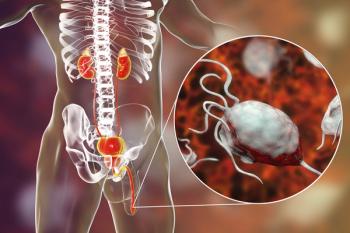
New Ways Prostate Cancer Overcomes Current Treatments
Researchers have identified pathways that are important for prostate cancer growth after the tumor becomes resistant to androgen therapies.
Researchers from Harvard Medical School in Boston, Memorial Sloan-Kettering Cancer Center in New York, and colleagues from other US and Italian institutions have identified pathways that are important for prostate cancer growth after the tumor becomes resistant to androgen therapies. The
The so-called co-clinical approach, used by Pier Paolo Pandolfi, MD, PhD, director of research at the Cancer Center at Beth Israel Deaconess Medical Center in Boston, and his co-authors, takes advantage of both genetic mouse prostate cancer models and data from patients, with the goal of speeding up the identification of new targets and therapy approaches for cancer patients.
“This was a very unique approach to understand the mechanisms of treatment resistance to hormonal therapies for prostate cancer,” said Joshi J. Alumkal, MD, prostate cancer specialist at the Oregon Health & Science University in Portland.
The real importance of the work, added Alumkal, is that the researchers were able to identify abnormalities that were present in patients who were more resistant to androgen deprivation therapies and show that these abnormalities were the drivers of resistance.
Androgen deprivation therapy (ADT) is the standard of care for prostate cancer patients, but the majority of patients eventually develop castration-resistant prostate cancer (CRPC).
Since the observation that androgen signaling continues to be important for these prostate tumors that become castration-resistant, therapies that target androgen pathways have been developed and are now widely used to treat castration-resistant forms of prostate cancer. Therapies that reduce the production of androgens or inhibit the receptor for androgens on cells are approved by the US Food and Drug Administration, but understanding other pathways important for prostate cancer growth, independent of the direct androgen signaling pathways, is needed.
According to Nicholas Vogelzang, MD, a medical oncologist who treats prostate cancer patients at the Comprehensive Cancer Centers of Nevada, the transition point from hormone-sensitive to hormone-resistant prostate cancer “has never really been understood at a molecular level.” This switch is important clinically, but other than upregulation of the androgen receptor, it is not clear what signaling pathways are at play, says Vogelzang, who was not involved in the current study.
The researchers found that several mutation combinations in prostate cancer mouse models could predict whether these tumors were resistant or responsive to ADT. Mouse models with a Pten mutation were not resistant to chemical castration. But when one of two gene mutations, in either Trp53 or Zbtb7a, was added to the Pten mutation, the tumors became resistant to ADT.
The researchers next sought to identify genetic markers that could predict resistance to ADT using 84 tumor samples from patients. They found that those who are initial “poor responders” to ADT are more likely to develop CRPC and distant metastases compared with those who initially respond well to ADT.
Patient samples were grouped by whether the patient had responded to ADT, had a partial response, or was intrinsically resistant to ADT. The samples were analyzed for either upregulation or downregulation of a spectrum of genes. While 2 of the 23 patients who had a good response to ADT eventually developed resistance, 6 of 13 patients who had an initial poor response to ADT developed resistance.
The combination of PTEN and ZBTB7A mutations resulting in the loss of both proteins was consistent with the mouse model study-samples with both mutations were more likely to be poor responders to ADT, and this combined mutation, compared with PTEN alone, resulted in the ability of these prostate cancer cells to grow despite treatment.
Using both mouse models and analyses of patient tumor samples, the research team identified that expression patterns of XAF1 (decreased) and XIAP and SRD5A1 (both increased) were linked with high Gleason score, recurrence, and metastasis
Using mouse models and cell lines, the researchers showed that combining ADT (bicalutamide) with embelin, an inhibitor of XIAP, could prevent tumor growth compared with ADT alone when both Pten and Zbtb7a were mutated. Adding a third drug, dutasteride, an SRD5A1 inhibitor, resulted in even more prostate cancer cell death.
“The studies suggest there are just a few genetic switches present at the start of treatment, which will predict resistance to hormone therapy,” said Vogelzang. Still, these results are in mouse models and whether they apply to human tumors is still in question, Vogelzang added.
Peter S. Nelson, MD, of the Fred Hutchinson Cancer Research Center in Seattle, in his
Pandolfi and colleagues are now working to begin a clinical trial testing the three-drug combination in genetically stratified CRPC patients.
While the potential resistance pathways identified are exciting, the most significant result, said Pandolfi, is that this study shows that the co-clinical approach can be used to anticipate responses to specific treatments by stratifying patients based on molecular tumor markers. Patients with the same molecular tumor profile as corresponding mouse models can be quickly re-assigned to a different therapy selected through testing on that corresponding mouse model.
The approach will depend on mouse models that accurately mimic the course of disease in humans. If it works, it could reduce costs for expensive clinical trials by identifying more accurately the subsets of patients who are likely to respond, based on mouse model data.
“The precise identification of responsive tumors could transform our current 10% efficacy rate in blinded clinical trials to a 100% efficacy rate in an optimized co-clinical setting,” said Pandolfi.
Newsletter
Stay up to date on recent advances in the multidisciplinary approach to cancer.


















































































